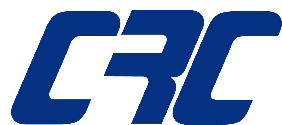Breadth of Scope
FDA required new BSL-3 staff to be trained to work in BSL-3 labs at FDA White Oak.
Needs Assessment
CRC conducted a thorough assessment of the FDA, Center For Biologics Evaluation and Research BSL-3 laboratory safety training program and training staff with the goal of implementing instructional design and planning following established adult learning principles to develop a rigorous one-week training program. A needs assessment was performed for developing meaningful and measurable information transfer. Following these processes brought into focus training which is actually needed and appropriate for the target audience. It was also used to determine information outreach that was more appropriate through non-training solutions such as video-memos, short informational videos, and job aids. The analysis identified the characteristics of the target audience and considered appropriate delivery methods. Working with stakeholders, training, and information outreach efforts were prioritized to ensure the greatest reach and impact.
Curriculum
The safety training program taught safe work practices and reinforced the principle that laboratory safety protects lab workers, research, and the environment from potential hazards associated with biomedical and clinical research and promotes excellence in the conduct of safe science. The training offered hands-on and didactic training to all new lab personnel with the goal of ensuring that all members of the White Oak campus community know and comply with the health and safety requirements, standards, and operational practices of the FDA. Modules developed included:
- Principles of Biosafety
- Recognizing and Assessing Biological Hazards in the Laboratory
- Microbiological Risk Assessment in the Laboratory
- Aerosol Hazards in the Laboratory
- Biological Select Agents and Toxins (BSAT)
- Laboratory Safeguards and Procedures
- Minimizing Aerosols
- Waste Disposal Procedures
- Biological Safety Cabinets
- Decontamination and Sterilization: Heat Treatments and Chemicals
- BSL-3 Laboratory Design, Directional Airflow
- Emergency Procedures
- Handling and Storage of Hazardous Chemicals, Globally Harmonized System
- Post-work Safeguards and Procedures
- Laboratory Biosecurity
- Emergency Response and Security in the Laboratory
CRC’s instructional designer and subject matter experts storyboarded the presentations. The objective of storyboarding was to collect the information to be presented in a “brainstorming” creative process. Through a series of iterative reviews, the information was pared down to the most useful or on-point, then prioritized and sequenced. Ideas for graphic representation and text were sketched in. This process provided a means to frame the direction of the project without the expense and time of media development. Revisions were easily made using this method and the approval of stakeholders was obtained before incurring greater investment.
CRC provided instruction and blended delivery processes for instructor-led classroom and asynchronous on-line training. To ensure that the students understood the basic principles and practices in a BSL-3 laboratory, CRC designed an asynchronous self-paced eLearning module available online that was self-directed. Assessments were objective and feedback on the learner’s progress was provided by the program through planned knowledge checks during the course and after completion of the post-course assessment. Learning styles included auditory, visual, and read/write.
Evaluation
CRC applied the Kirkpatrick four-level evaluation model to develop a thorough learner evaluation to determine effectiveness of training, completion rates, the application and transfer of knowledge, and impact on the agency and its mission. The knowledge check was administered through the interactive eModule, quizzes and evaluations.
